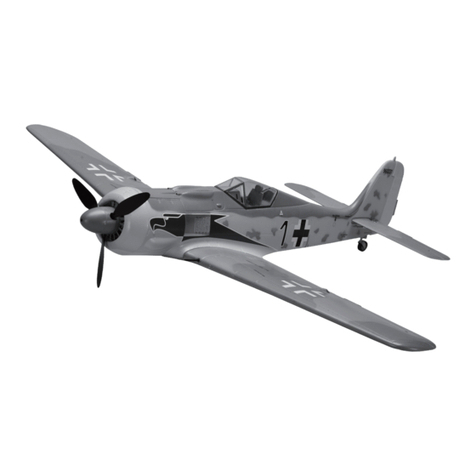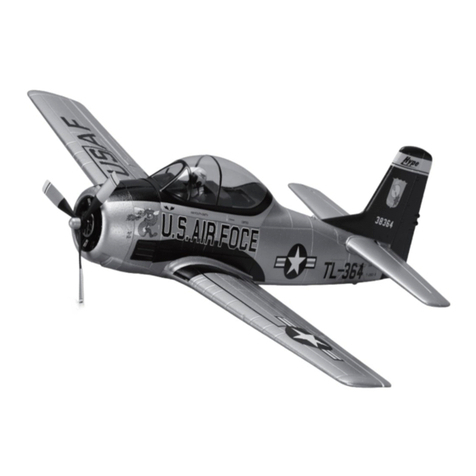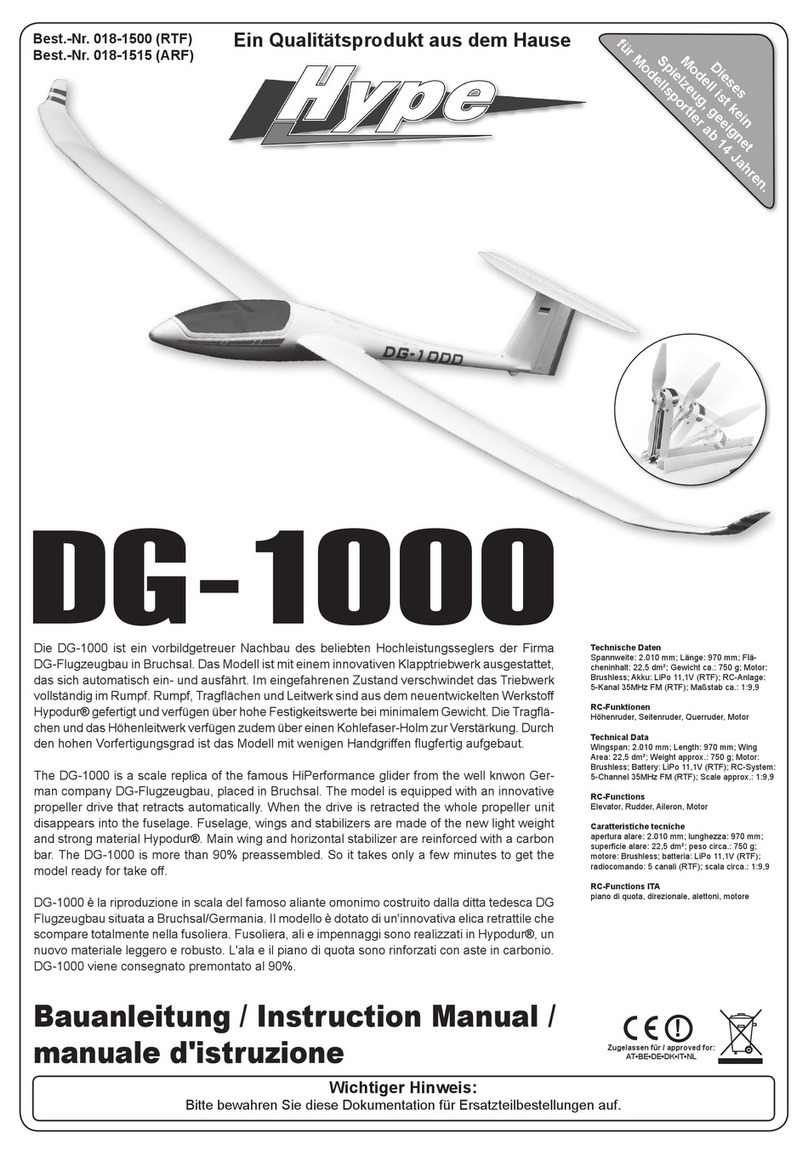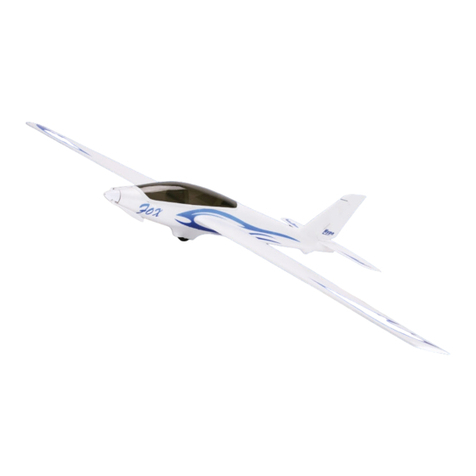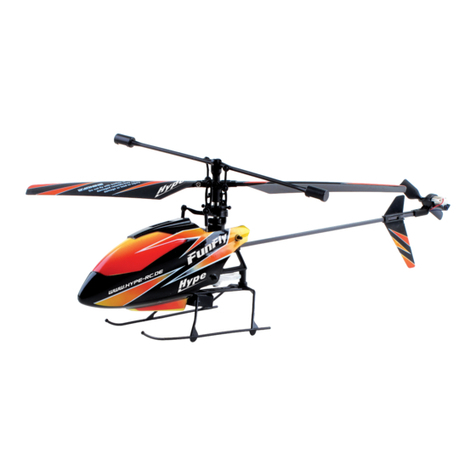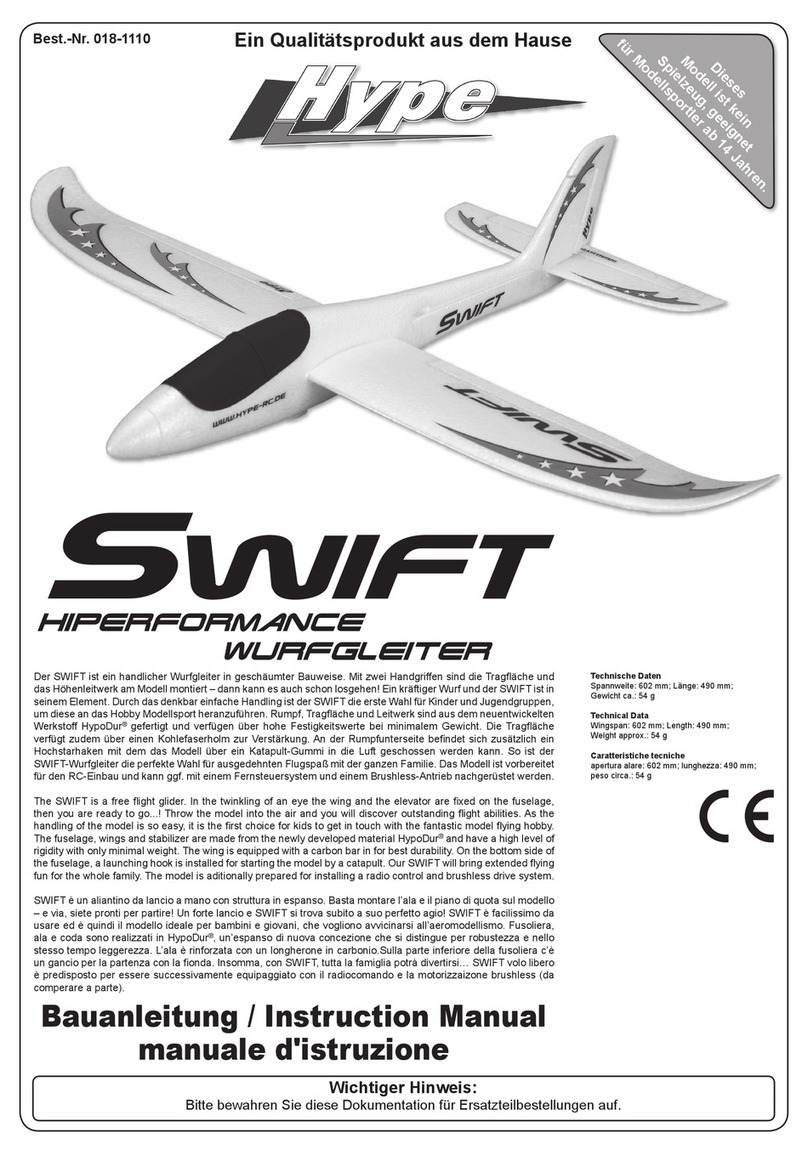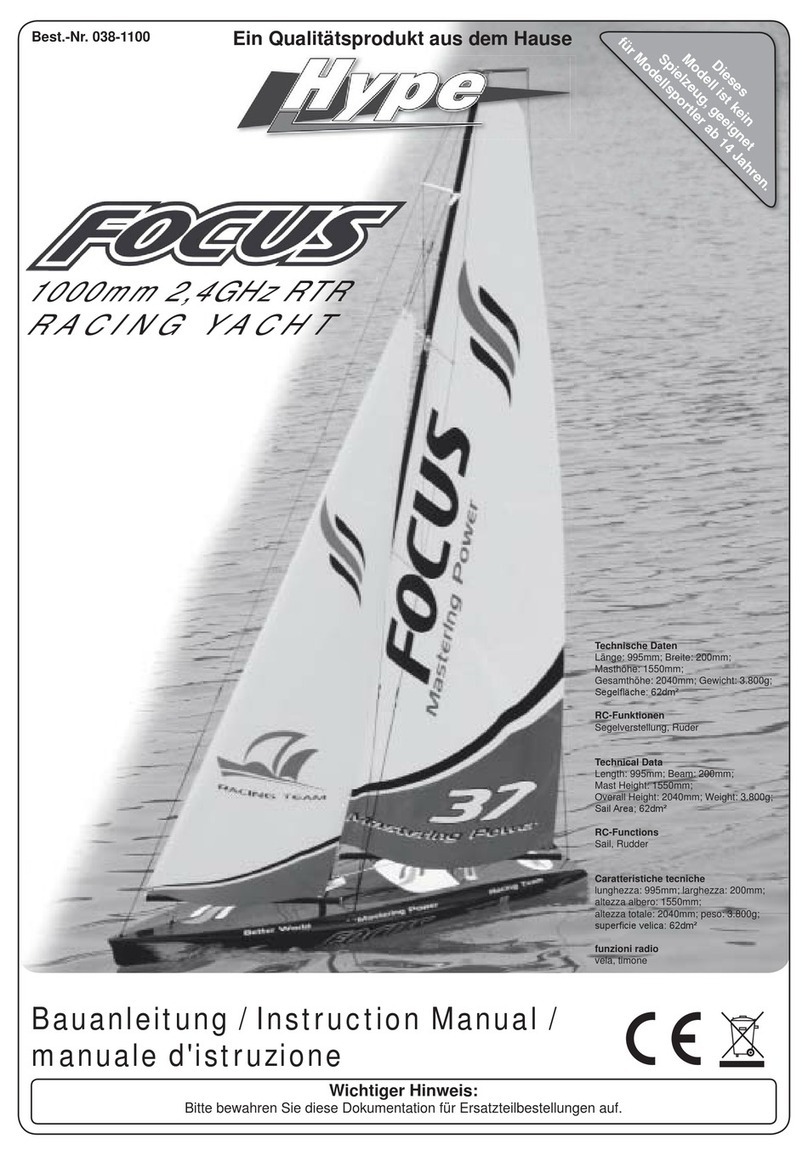Bauanleitung / Instruction Manual /
manuale d'istruzione
Ein Qualitätsprodukt aus dem Hause
Die ASW-17 ist ein vorbildgetreuer Nachbau des legendären Hochleistungsseglers der Firma Schleicher.
Das Original der ASW-17 ist als freitragender Schulterdecker mit Doppeltrapezügel konzipiert und wurde
vollständig aus GfK gefertigt. Bei unserem Modell sind Rumpf, Tragächen und Leitwerk aus dem neuent-
wickelten Werkstoff HypoDur® gefertigt. Alle Bauteile verfügen über hohe Festigkeitswerte bei minimalem
Gewicht. Die Tragächen und das Höhenleitwerk verfügen zudem über einen Kohlefaserholm zur Verstärkung.
Der Antrieb erfolgt durch ein LiPo-Brushless-System, das perfekt auf die ASW-17 abgestimmt ist. Durch den
hohen Vorfertigungsgrad ist das Modell mit wenigen Handgriffen ugfertig aufgebaut. Das Modell verfügt über
geteilte Tragächen, die sich mit wenigen Handgriffen montieren lassen. Dabei kommt eine kraftschlüssige
Tragächensteckung mit Snap-Lock-Verriegelung zum Einsatz, die die beiden Tragächenhälften sicher
miteinander verbindet.
The ASW-17 is a faithful reproduction of the popular high performance glider made by the company Schlei-
cher, Germany. The original of the ASW-17 is made by FRP. It is gesigned as a shoulder wing airplane with
trapezoid wing. Fuselage, wings and stabilizer are made from the newly developed material HypoDur® and
have a high level of rigidity with only minimal weight. The wings and the horizontal tail unit have a carbon
bre cross-beam for reinforcement. The LiPo brushless system is the driving mechanism, which is perfectly
co-ordinated on the ASW-17. Thanks to its high level of prefabrication the model is ready for ight after a
few nishing steps. The model has separated wing halfs which can be installed easily. A force-t Snap-Lock-
System is used, which securely connects the two wing halves.
ASW -17 è la riproduzione fedele del leggendario aliante della ditta Schleicher. L’originale dell’ASW-17 è
stato costruito interamente in bra di vetro dall’azienda tedesca Schleicher. Fusoliera, ali e coda dell’ASW-17
by Hype sono realizzate in HypoDur®, un innovativo materiale espanso molto robusto e nello stesso tempo
leggero. Le ali e il piano di quota sono rinforzati con die longheroni in carbonio. Hype ASW-17 è motorizzato
con un sistema LIPO-brushless che è perfettamente adatto a questo aliante. Il modello è altamente prefa-
bbricato e il montaggio si termina in pochissimo tempo. Il modello ha due semiali che si montano facilmente
sulla fusoliera con una baionetta e sono assicurate con un fermo tipo snap-lock.
Best.-Nr. 018-1600 (RTF)
Best.-Nr. 018-1610 (ARF)
Wichtiger Hinweis:
Bitte bewahren Sie diese Dokumentation für Ersatzteilbestellungen auf.
Dieses
Modell ist kein
Spielzeug, geeignet
für Modellsportler ab 14 Jahren.
Technische Daten
Spannweite: 2.115 mm; Länge: 998 mm; Flä-
cheninhalt: 28,6 dm²; Gewicht ca.: 790 g; Motor:
Brushless; Akku: LiPo 11,1V (RTF); RC-Anlage:
4-Kanal 2.4GHz (RTF); Maßstab ca.: 1:9,5
RC-Funktionen
Höhenruder, Seitenruder, Querruder, Motor
Technical Data
Wingspan: 2.115 mm; Length: 998 mm; Wing
Area: 28,6 dm²; Weight approx.: 790 g; Motor:
Brushless; Battery: LiPo 11,1V (RTF); RC-System:
4-Channel 2.4GHz (RTF); Scale approx.: 1:9,5
RC-Functions
Elevator, Rudder, Aileron, Motor
Caratteristiche tecniche
apertura alare: 2.115 mm; lunghezza: 998 mm;
supercie alare: 28,6 dm²; peso circa.: 790 g;
motore: Brushless; batteria: LiPo 11,1V (RTF);
radiocomando: 4 canali 2.4GHz (RTF); scala
circa.: 1:9,5
RC-Functions ITA
piano di quota, direzionale, alettoni, motore
Zugelassen für / approved for:
AT•BE•DE•DK•IT•NL
!
0678
